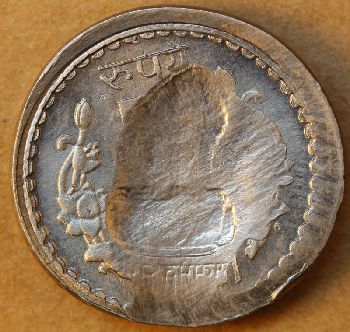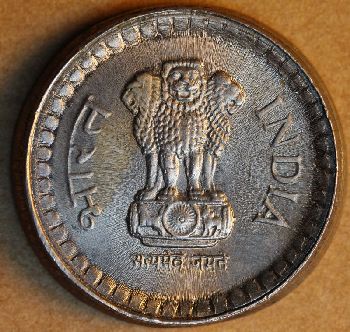Part VI. Striking Errors:
Brockages:
Brockage From Struck Die Fill
Definition: A brockage generated by a previously-struck accumulation of compacted die fill or “grease”. This doesn’t happen very often because the die fill has to have just the right consistency. It can’t be so soft or so hard that it doesn’t strike up, and it can’t be so soft that it is unable to transfer its design to a planchet. Beyond that, it has to rise high enough above the die face to stand a chance of contacting the opposite die when a planchet fails to be fed into the striking chamber. This would probably need to coincide with an unusually small minimum die clearance.
Alternatively, the layer of die fill needs separate from the die it was attached to, and either fall onto or stick to the opposite die so that the side that had molded itself to the die face is oriented toward the planchet.
A brockage from struck die fill would be expected to show some of the following characteristics:
- Indistinct borders
- Uneven outline
- A coarse texture affecting both the brockage and the surrounding recess
- Indistinct incuse details
- Additional, entirely separate areas that have been struck through “grease”
This undated 5 rupee coin (1992-2004) displays a brockage of the Ashoka lion on the reverse face, which was struck by the hammer die. The brockage is perfectly aligned with the die-struck lion on the obverse face. This brockage satisfies the first four conditions listed above. Additionally, the smeared Hindi script beneath the lion suggests an unusual composition.
Another possible source for a brockage with these characteristics is a struck floating encrustation. These are flakes of compacted detritus that emerge from the guts of the press.

